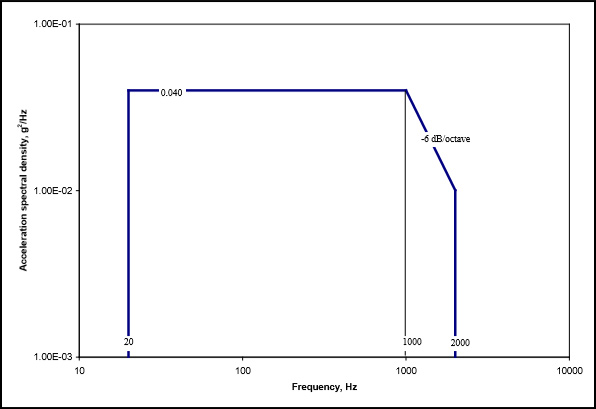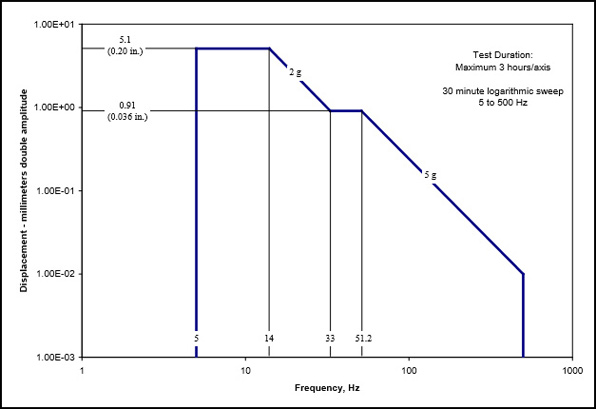This is part nine article in a series of product reliability testing blog posts concerning the MIL-STD 810 Vibration Section. This blog was written with reference to MIL-STD-810G w/Change 1 dated 15 April 2014. DES has the experience and expertise to help you determine what profiles are appropriate for your product and to run your MIL-STD-810 vibration test. For more information, please check out our Vibration Testing Services page and our other MIL-STD-810 vibration testing blog articles.
Vibration Testing Articles
MIL-STD-810 Vibration Testing Overview
MIL-STD-810: Vibration Testing Category 4 – Truck/Trailer – Secured Cargo
MIL-STD-810: Vibration Testing Category 9 – Aircraft – Helicopter
MIL-STD-810: Vibration Testing Category 7 – Aircraft – Jet
MIL-STD-810: Vibration Testing Category 8 – Aircraft – Propeller
MIL-STD-810: Vibration Testing Category 12 – Fixed Wing Jet Aircraft
MIL-STD-810: Vibration Testing Category 15 – Aircraft Stores
MIL-STD-810: Vibration Testing Category 20 – Ground Vehicles – Ground Mobile
Minimum Integrity Testing
MIL-STD-810 Method 514.7, Annex E offers alternative supplemental product vibration testing services. One of which is referred to as minimum integrity testing (MIT). The MIT can be used as a baseline test for materiel either in the early stages of product design or where environmental vibration is unknown. MIT is designed to provide reasonable assurance that materiel can withstand installation/removal, transportation, handling, etc. MIT cannot be used for qualification. Tailored test methods are preferred over MIT.


Figures 1 and 2 show the vibration profiles outlined for MIT in Method 514.7, Annex E. Figure 1 is a random vibration profile for general use, while Figure 2 is a sinusoidal vibration profile for helicopter material. They were not developed from application environments.
The material under test should be hard mounted to a fixture. These vibration tests should not be applied through vibration isolation. The MIT should not be applied to large material because unnecessarily high loads could be induced in mounting and chassis structures, while higher frequency vibrations at subassemblies are low. In cases where the material is large, the MIT should be applied to subassemblies. The maximum test weight of a materiel or subassembly should be approximately 36 kg (80 lb) when using MIT.
According to MIL-STD-810G w/Change 1, experience has shown that materiel that withstands these exposures typically functions satisfactorily in the field. Failure to pass an MIT does not imply that the materiel will fail in its service environment. Failure to function subsequent to exposure to an MIT test should serve as grounds to make an attempt to define the test environment and make an effort at developing a tailored test.